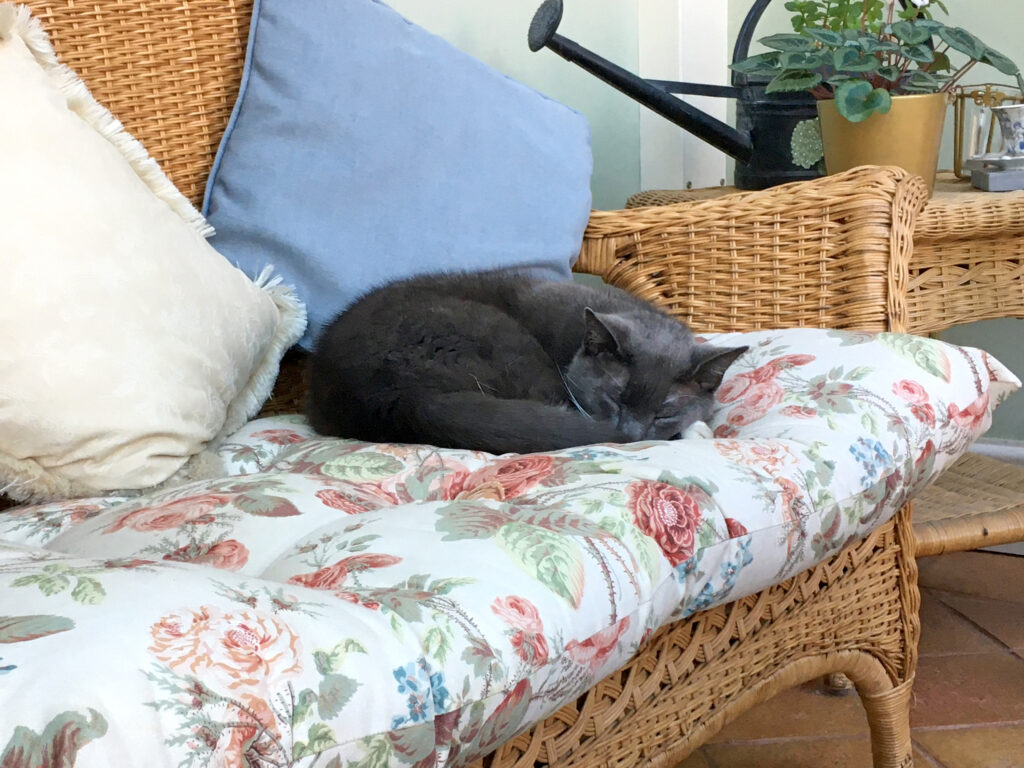Creating a Refuge Room for Cats: Ensuring Safety and Comfort During Stressful Situations
 Copyright Caroline Clark
Copyright Caroline ClarkEstablishing a refuge room in the home, designed to induce a sense of safety and calm, can be helpful for a range of situations:
- Introducing a new cat or other pet into the home.
- When trades people or visitors are in the home.
- Firework events or thunderstorms.
- Moving into a new house or after redecorating or renovations.
When choosing a room, select one that doesn’t get used much. A spare room is ideal especially if it is set in a quiet part of the house. Make sure the cat has access to all their key resources: Litter box, food and water (spaced apart), several cosy resting places, places to scratch, climb and hide with opportunities to get up high and to play. Work can then begin on creating additional measures.
Creating a Harmonious Environment
Ensure safety
- Carry out a risk assessment to check for anything that might be hazardous e.g. electrical wires that could be chewed, unstable furniture or any loose or sharp fittings.
- Make sure the room (and rest of the house) is escape-proof. A cat will slip through the smallest of gaps and have been known to climb up an open chimney to escape.
- Avoid using cleaning agents that are toxic to cats (e.g. phenol based products).
- Keep the room free from toxic plants. That includes most forms of lily which are highly poisonous and can result in fatal kidney failure. It’s not just the stamens but all of the plant is poisonous, even the water that they have been standing in.
Provide places to hide
- Space under, on top of and inside furniture.
- Line book shelves with bedding.
- Cardboard boxes and paper bags.
- Igloos.
- A pile of ruffled blankets and towels.
- Hiding small tasty food items inside some hidey holes can help create positive associations with their new surroundings.
Create feelings of comfort
- For newcomers, ask the shelter staff or breeder to harvest the cat’s scent and transfer it to their refuge room, just before giving them access (https://petcourses.co.uk/free-resources/the-importance-of-a-cats-scent-profile). During the delay in getting the scent cloth home, place it in an air-tight container.
- Synthetic pheromone preparations or calming aromas, designed for cats, can be installed in diffusers 24 hours prior to the cat’s arrival or sprayed on bedding fifteen minutes beforehand.
- Provide plenty of warm cosy resting sites.
- Soft and relaxing classical piano pieces or custom made recordings designed specifically to help calm cats in the background (but observe for negative response).
- Make sure artificial lights aren’t too bright.
Read my article, with a short video, on harvesting and transferring cat ordours to a new environment (https://petcourses.co.uk/free-resources/the-importance-of-a-cats-scent-profile)
Keep them mentally engaged
- Scatter food on the floor and in some of the raised locations and hides.
- Make a couple of simple (https://petcourses.co.uk/free-resources/preventing-separation-anxiety-in-cats), using strong smelling foods to help draw them in to them.